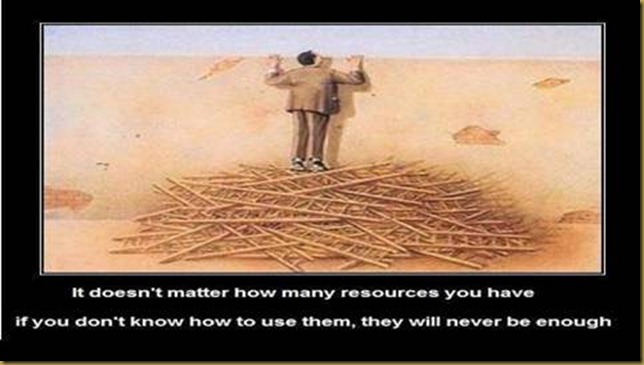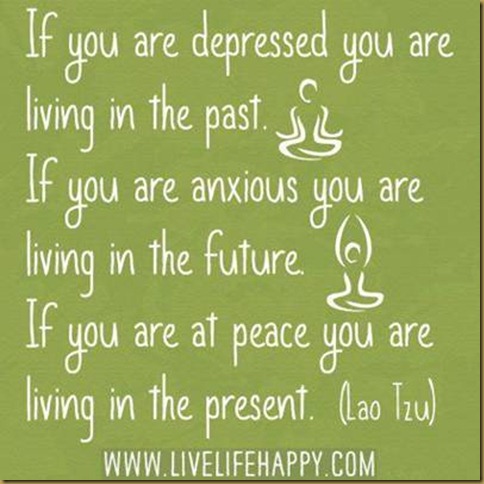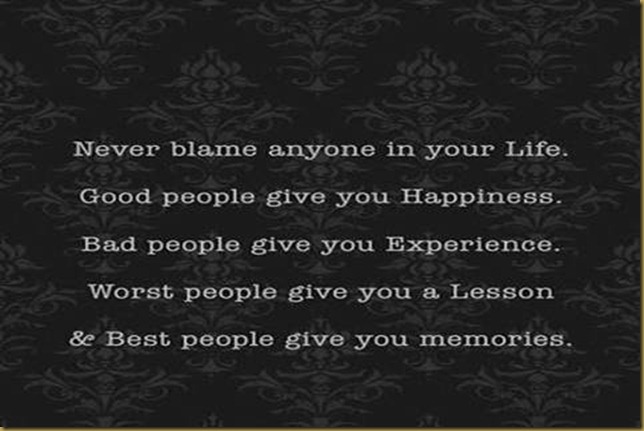 Jetsün Khandro Rinpoche discusses Tibetan Buddhism's encounter with western culture and the challenges it faces in the future.
Jetsün Khandro Rinpoche discusses Tibetan Buddhism's encounter with western culture and the challenges it faces in the future.
You have said that Buddhism, and Tibetan Buddhism in particular, has reached a stage where it is not seen as a novelty any more, or something that simply arouses people's curiosity - it has really begun to take root in the West.
What are the distinctive qualities of Tibetan Buddhism, and what elements are particularly relevant and beneficial for the modern world?
Jetsün Khandro Rinpoche: There seem to be several layers to your question. It's very true that today Buddhism comprises a wide age range - from newborn babies born into Buddhist families, to older practitioners who have been practising for forty to fifty years. Based on that fact, Buddhism has lived in the West for more than half a century. It has been there a lot longer than that, but it has not been actively taught in the way it is today.
When it comes to the study and experience of meditation, there are numerous western scholars, practitioners, meditators, teachers and retreatants, and that itself has brought a tremendous maturity to the way in which Buddhism is imparted and practised in European and other western countries today.
There is a sense of it being much more settled and much more mature as a container, which can hold a tremendous variety of subjects, as well as very profound and advanced subjects of study and practice.
We are also seeing the impact of technological advances; the translation, archiving and accessibility of materials have just spiralled in the last two decades.
The third factor we find is that people have oriented their life to the Dharma. They are not going to Dharma centres as someone might go to church on a Sunday; it's no longer a weekend practice that they do, or a Thursday open night. People are actually living at Dharma centres, huge centres like this one at Lerab Ling, which is like a complete village in itself.
 For something that used to be totally dependent upon a person hiking all the way to the Himalayas, today you click a button and can actually get the same kind of experience
For something that used to be totally dependent upon a person hiking all the way to the Himalayas, today you click a button and can actually get the same kind of experience
So it feels like the container is very ripe and mature, and therefore there is almost no holding back in what could be transmitted and what could be practised. So I think we are at a very optimistic stage in the westernization of Buddhism, which is excellent.
Of course that doesn't mean that there won't be people who are still very much at the beginning stages and still curious, just as the Himalayas and Shangri-la used to be a source of fascination.
Driving into Lerab Ling yesterday, I saw two men in the bush up on the hill, looking down with binoculars. I don't know whether they were locals or tourists, but it's a nice example of how people might have a very distant curiosity about the statue of Padmasambhava on the lake, or this wonderful temple.
And of course, to the majority of people living in the West, Buddhism is still a very new, mysterious kind of philosophy that teaches mysticism, so there are all those different aspects that one has to work with.
For that reason, I think we're at a very interesting phase where Buddhism has gained maturity for those who have been practising it, and yet it retains the same kind of mysterious, attractive air, and some people may even have a slight apprehension towards it. I think one has to respond to all these different levels and different needs.
Interestingly, this is not left only to the Tibetan teachers now, but to many people in the West who have responsibility for furthering that flourishing and expansion of the Dharma, and the teachings to be imparted. It's something everyone is looking at, and only time will tell how it will turn out.
As for the attraction of Buddhism, one thing that I find significant these days, besides all the things that usually attract people to Buddhism, is the accessibility of the materials that people are able to get hold of. There used to be a time some twenty or thirty years ago when books on Buddhism, for example, were not so readily available. Nor could you go on to the internet and find so much material on Buddhism.
But today that has changed. There is an enormous, easy access to materials, so that if you have a vague idea of what it is that you are searching for, you can actually initiate your search without ever actually having to go to a Dharma centre, meet a Buddhist, or follow a teacher. You can gain quite a lot of information in that way, and I think that has done a lot in terms of creating the first communication with people.
For something that used to be totally dependent upon a person hiking all the way to the Himalayas, today you click a button and you can actually get the same kind of experience. So that's a change that is happening, and as the Buddha himself said, you should work in accordance with the times and changes, and I think that approach will always be very beneficial to all.
❖
Is there a particular aspect of Tibetan Buddhism that is especially powerful, useful and beneficial to people in the West, or can you only talk about it as a whole?
In human life, there seem to be phases of looking for something, obtaining, then not being content with that and looking for something else.
If you look at the western world, especially after the world wars, there was an enormous emphasis on consumerism. The acquisition of materialism dominated the 1950s and 60s, and even through the 70s and 80s. It was so materialistically driven, but I think it has reached a saturation point where many individuals feel that this does not really bring about deeper contentment.
 Even in those areas where normally it was never felt, you hear terms like contemplation, meditation, reflection...
Even in those areas where normally it was never felt, you hear terms like contemplation, meditation, reflection...
Having exhausted their acquisition of the external objects of happiness, or what they believe to be objects of happiness, I think it has led to a natural curiosity and a search for something that may be much more on an inner level.
As I said earlier, with the accessibility of the materials, there comes a point when people find that learning to meditate, learning about what your mind is, learning a little bit more contemplation, might be good for you.
Here there has been a change. There is not so much mysticism about it, but there's a lot more emphasis on inner peace - even such a thing as de-stressing, for example, or recognizing that meditation simply contributes to one's own psychological well-being. These are newer aspects that we find are attracting people to meditation, whether it's Buddhist meditation or any kind of contemplative meditation. That's the main inspiration people are beginning to get.
In developing countries, for example, we find that materialism and consumerism are still very strong. It's very interesting to see that in these countries, the sense that happiness lies in the acquisition of outer objects is fairly dominant; whereas in the West, which has gone through that and reached a saturation point, you find that eastern philosophies are being appreciated. So I think that culturally this is a very interesting time for the two regions of the world.
❖
So you think people are starting to feel there is something other than the materialistic approach?
I think so. Even in those areas where normally it was never felt, you hear terms like contemplation, meditation, reflection, or just breathing and being silent, resting and watching your breath.
These are very normal things these days; they have become like household terms. You find them on the Oprah Winfrey show, and that itself shows it is in the minds of the 'common man'. Some people may give a word to it, and some not. Some may try to find more neutral ways of approaching the topic, and some not. It's very interesting though.
❖
A number of lamas feel that, for beginners at least, the study and practice of Tibetan Buddhism should be simplified. For many students, the intellectual information can be overwhelming, and their emotional side can be overlooked, which can lead to them giving up.
How can you shape an essential study and practice programme that is authentic, admittedly not 'complete', but can lead students to a more thorough study later on?
I think we need to respond to that need. Take the example of compassion, which is a fairly commonly used term in any kind of Buddhist teaching.
In the texts - the classical or traditional approach - we talk about relative compassion, absolute compassion and non-dual compassion. Since the non-dual is the very highest level of compassion that we're capable of, the focus of our path of training and practice is always on trying to achieve that non-dual compassion. For that, the absolute first has to be examined, in order to come to recognize the absolute nature of the compassion, which should be free of all kinds of fixations and grasping.
While that is the ideal, we are always very arrogant, aren't we? Our ego is always watching us, always there; and it suits the ego to accept the challenge of doing what you are supposed to do from a Buddhist point of view. You are told that this is your natural capability, and you would love to be the first one to get it.
So this becomes the focus of our practice, and both the teachers and the teachings emphasize that we should try to remain in that non-dual state. Ideally speaking, that's what we're capable of doing, that's what we should do, and that's what we've all been trying to do. But I sometimes ask my students, what do you really think you are going to do first, attain enlightenment or die? Which one's going to come first?
 It's essential to try to bring it down to a more grounded experience of Dharma, so that everything is not kept on the level of theory and intellectualization
It's essential to try to bring it down to a more grounded experience of Dharma, so that everything is not kept on the level of theory and intellectualization
We would all love to attain enlightenment before we die, and the teachings talk about it, but what are the statistics? It's most likely that we're going to die before we're enlightened, isn't it?
Given that fact, it becomes so important not to neglect relativity - relative compassion, and relative ways of integrating meditation and anything else that we learn from the Buddhist teachings, or from the philosophy itself, the relative aspects of living right...
Now when you think about it from the perspective of the teachings, teachers will probably always say that virtuous living, acquiring merit, being mindful of karma, living ethically according to the vinaya or the teachings of the Buddha, have always been emphasized. This was never neglected, and we were never asked to be careless about this in our pursuit of absolute truth.
So in a way, the relativity is taught. But at the same time there is so much intellectual and scholastic emphasis on the absolute that we almost think that it's either childish or too much of a beginner's stage to be talking about simple things like relative happiness, or living one's life with merit as the main focus.
What I am trying to say is that the language is definitely missing. We have to respond to that, and perhaps one very simple approach would be to build up a good foundation of relative teachings, or teachings that emphasize relative ways of approaching.
For example, the ten virtuous actions' is a topic that maybe sounds too religious for 'elite Buddhists', who always consider themselves to be followers of a non-theistic philosophy. Psychologically, that's what we have in our mind, and so we think, "talking about virtuous and non-virtuous actions is for old Tibetan women who are circumambulating with mani wheels in their hands. I'm going to think about emptiness."
But there's a gap between your actualization of the experience of emptiness, and your neglect of wholesome actions.
What happens is that you get stuck in this conundrum of not being able to do both, and you live your philosophy of Buddhism in a much more delusional way, on the level of imagination, rather than actualizing it. This is definitely one very important factor that is missing, and one to which we must all respond. That will come, I think, as teachers teach more.
The majority of western practitioners are intellectuals. It's essential to try to bring it down to a more grounded experience of Dharma, so that everything is not kept on the level of theory and intellectualization. That's very important.
I always say that you can't really think your way to enlightenment. Most people these days believe that if you think hard enough, you are going to get that enlightenment - you don't actually have to do anything.
Somehow, doing simple things like circumambulation, sweeping the temple floor, or working in the kitchen - as opposed to sitting and meditating on emptiness - is seen as a failure. These are looked upon as the sort of things that are done by lazy people who don't like to study.
We have all these preconceived ideas, and what happens is that we don't live with humility, and we don't live with a sense of openness. We don't live the Dharma - we intellectualize it; and because of that gap, we may know a lot of Dharma, yet all that knowledge may not necessarily teach us how to live properly.
❖
As Tibetan Buddhism has spread beyond Tibet, to Mongolia and the Himalayas, and more recently to the West, it has been subject to cultural influences. Are there certain aspects of western culture that are not particularly helpful for the practice of these teachings?
It would be very difficult to just take something out and say, "this is a western thing that is harmful or helpful", because that would be making something individual that cannot really be seen in that way.
Every human being has different potential and different ways of approaching things, so what might work for someone might not necessarily work for others, and what has not worked for someone may work for somebody else.
In that regard, I have often hoped that western diligence and eastern devotion could somehow come together. People in the East tend to be brought up in the culture of Dharma and there's tremendous... maybe not devotion in all cases, but there's at least a sense of almost everything being natural.
 I sometimes think, why don't you just relax with something that you know is good for you, and have a much simpler approach of acceptance towards it?
I sometimes think, why don't you just relax with something that you know is good for you, and have a much simpler approach of acceptance towards it?
There's a lot more relaxation in accepting that many things don't have to be always calculated and examined and dotted out and printed out, and so forth. There's a sense of natural ease and being comfortable with things; a natural acceptance, you could say, without so much cross-examination.
However, the downside of that is that it can easily become an orthodox belief, a kind of 'blind faith' situation, so you have to avoid that.
Now in the West, you have this exquisite, brilliant dedication and diligence. However, it's a diligence that goes into too much 'fine-tooth comb' kind of research, searching and searching, and it takes up too much time. Basically that research is often done by a neurotic mind, finding neurotic things.
It's like a dog chasing its tail, and it never ends. Instead of actually getting down to doing it, you are just researching and researching, searching and searching.
As far as Buddhist philosophy goes, searching and finding your own solution sounds very nice, but when you spend your entire life doing that, you never actually get round to doing anything else. I sometimes think, why don't you just relax with something that you know is good for you, and have a much simpler approach of acceptance towards it?
So if you brought both of these things, a little bit more discipline to the East, and a little more devotion - or confidence, you could say - to the West, and if a single individual could embody both these wonderful qualities, then I'd say that would be the most excellent thing!
❖
Going forward, what do you think the main challenges are going to be for Tibetan Buddhist teachers, communities and individual practitioners in the West?
Of course, human issues are always going to be human issues. What are problems today used to be problems 2,500 years ago, and 2,500 years ago, whatever human neuroses were a problem, continue to be so - so there is not much of a difference as such.
But very particular to our tradition of Tibetan Buddhism is the public setting of the teachings. Our tradition has always been a direct form of training between teacher and student. The structure has changed today to it becoming more of a lecture instead of a teaching, very distant and dependent on a kind of relationship that's not as direct or strong, where the teacher knows the student completely and the student recognizes the teacher completely.
In some ways, the growth is very good. We can say Buddhism is flourishing and its growth is excellent, but on the other hand we will have the challenges of that growth requiring an even more vigilant sense of connectedness and sense of awareness, sense of responsibility from the teachers towards the students and the students towards the teachers. I think that is something we all need to be very aware of.
Interview by Andy Fraser
This interview took place when Khandro Rinpoche visited Lerab Ling in France to speak at the International Forum on Buddhism and Medicine in October 2010. It was published in View, July 2011.
http://www.viewmagazine.org/index.php/articles/interviews/190-an-interesting-time-for-buddhism-in-the-west.html















 Jetsün Khandro Rinpoche discusses Tibetan Buddhism's encounter with western culture and the challenges it faces in the future.
Jetsün Khandro Rinpoche discusses Tibetan Buddhism's encounter with western culture and the challenges it faces in the future. For something that used to be totally dependent upon a person hiking all the way to the Himalayas, today you click a button and can actually get the same kind of experience
For something that used to be totally dependent upon a person hiking all the way to the Himalayas, today you click a button and can actually get the same kind of experience